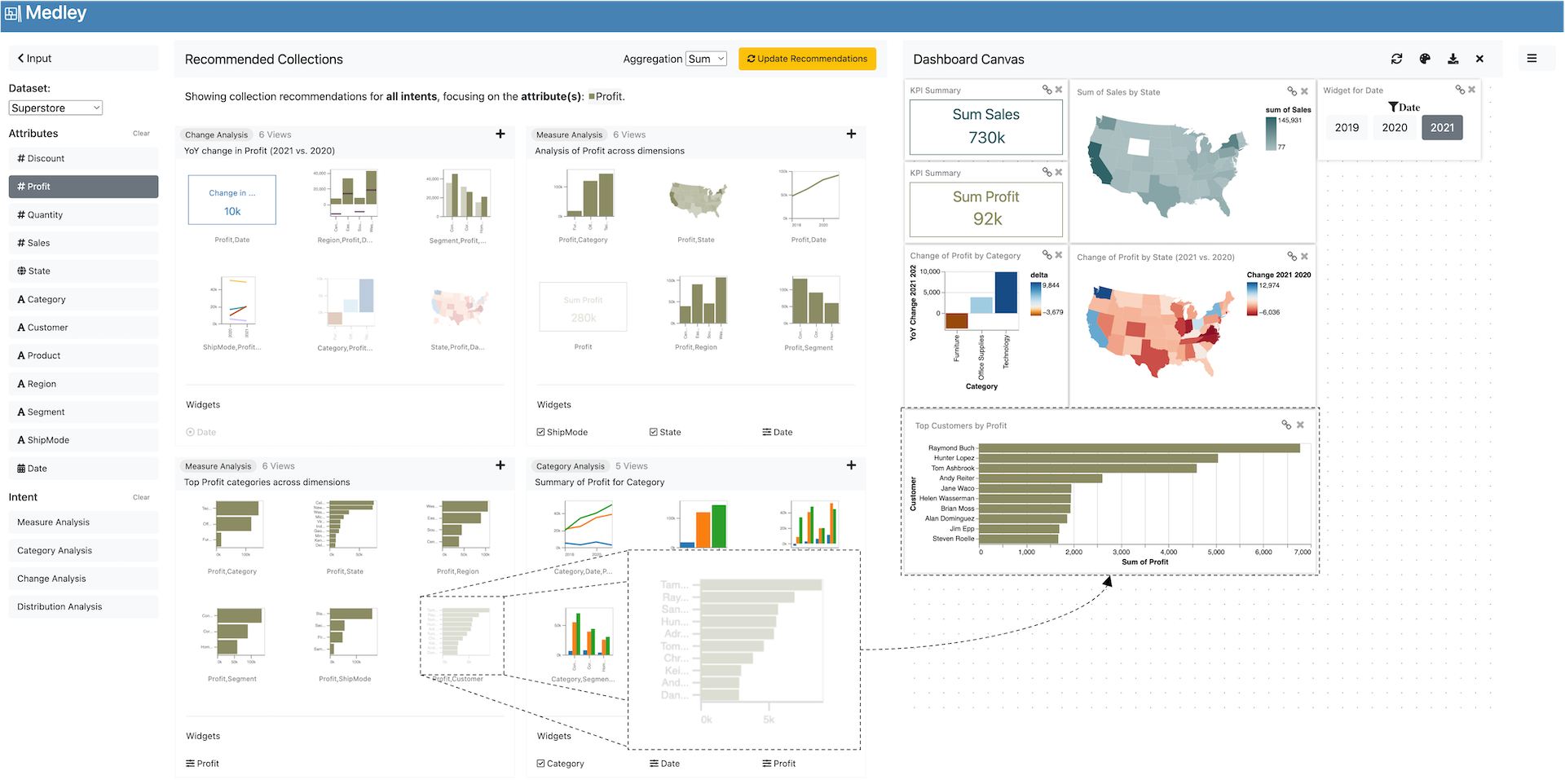Medley: Intent-based Recommendations to Support Dashboard Composition
Aditeya Pandey, Arjun Srinivasan, Vidya Setlur
View presentation:2022-10-20T21:33:00ZGMT-0600Change your timezone on the schedule page
2022-10-20T21:33:00Z

Prerecorded Talk
The live footage of the talk, including the Q&A, can be viewed on the session page, Provenance and Guidance.
Fast forward
Abstract
Despite the ever-growing popularity of dashboards across a wide range of domains, their authoring still remains a tedious and complex process. Current tools offer considerable support for creating individual visualizations but provide limited support for discovering groups of visualizations that can be collectively useful for composing analytic dashboards. To address this problem, we present MEDLEY, a mixed-initiative interface that assists in dashboard composition by recommending dashboard collections (i.e., a logically grouped set of views and filtering widgets) that map to specific analytical intents. Users can specify dashboard intents (namely, measure analysis, change analysis, category analysis, or distribution analysis) explicitly through an input panel in the interface or implicitly by selecting data attributes and views of interest. The system recommends collections based on these analytic intents, and views and widgets can be selected to compose a variety of dashboards. MEDLEY also provides a lightweight direct manipulation interface to configure interactions between views in a dashboard. Based on a study with 13 participants performing both targeted and open-ended tasks, we discuss how MEDLEY's recommendations guide dashboard composition and facilitate different user workflows. Observations from the study identify potential directions for future work, including combining manual view specification with dashboard recommendations and designing natural language interfaces for dashboard authoring.